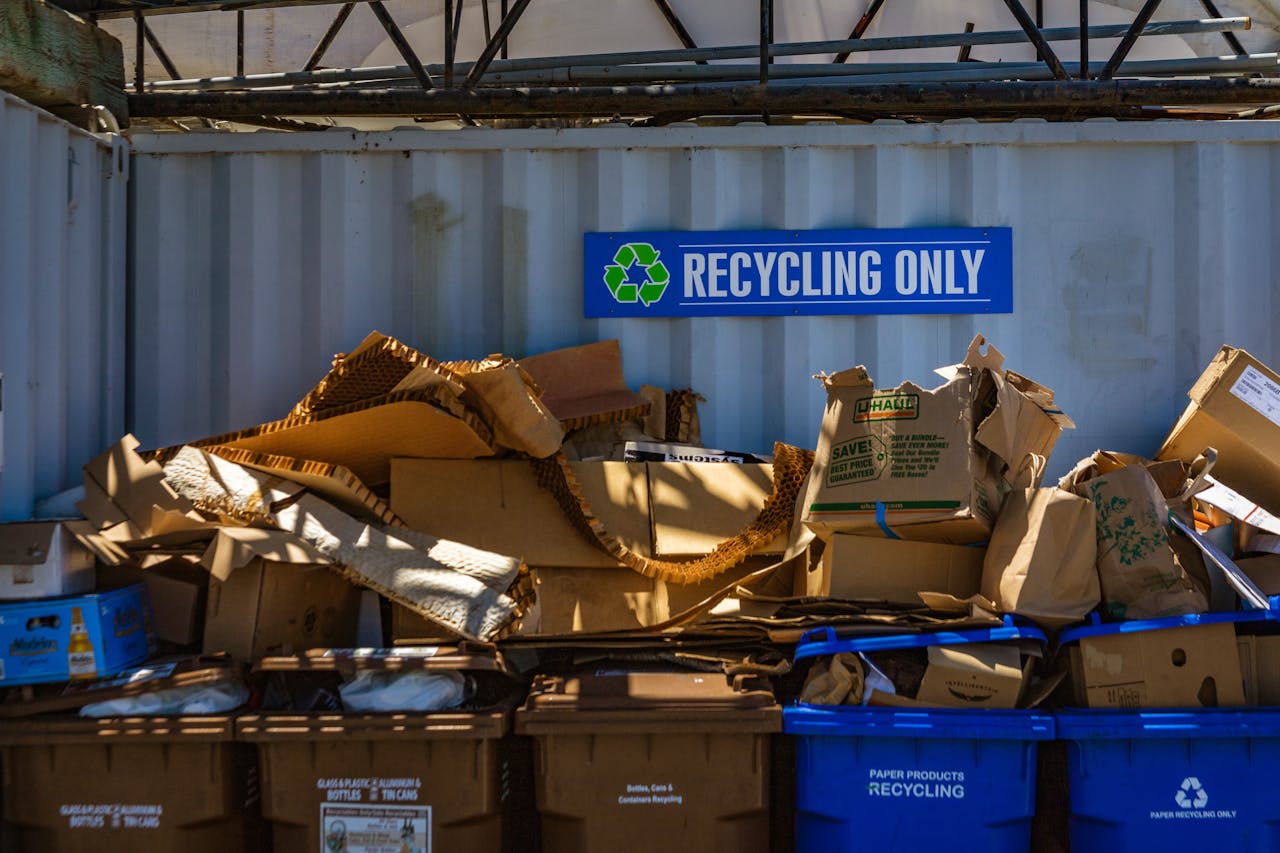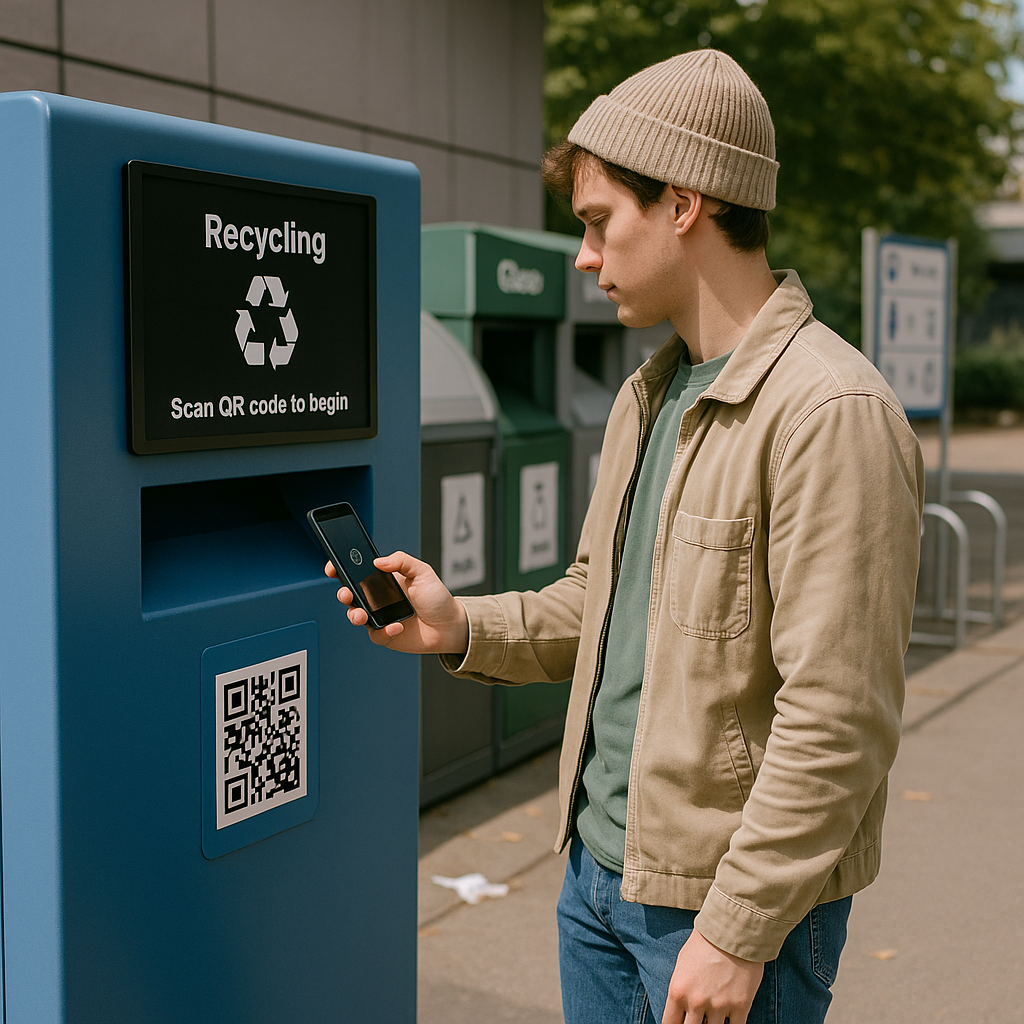5901 Botham Jean Blvd, Dallas, TX 75215
What Is Community Drop-off Scrap Logistics?
June 14, 2025Community drop-off scrap logistics refers to organized systems for collecting recyclable materials from residents at centralized locations. These stations provide convenient hubs where community members can bring materials that would otherwise end up in landfills. This concept is the backbone of many local recycling initiatives across the country.
Residents can drop off various recyclables, including metals, electronics, paper products, and plastics, at designated collection points. These strategically placed locations transform what was once considered waste into valuable resources that can reenter the manufacturing cycle. Each drop-off point is a crucial link in the larger waste management chain.
The environmental impact of these programs extends beyond simple waste reduction. By diverting materials from landfills, community drop-off systems help conserve natural resources, reduce energy consumption, and lower greenhouse gas emissions. Communities that implement these programs take a significant step toward sustainable resource management and environmental stewardship.
How Do Drop-off Locations Operate?

Drop-off recycling locations serve as centralized collection hubs strategically placed in high-traffic areas. These sites are typically located near major roads, shopping centers, and community buildings to enhance accessibility. The design prioritizes convenience for residents while ensuring operational efficiency for collection crews.
Most facilities feature clearly labeled bins or containers for different material types. Users simply drive up to the appropriate container and deposit their recyclables. This self-service model reduces staffing needs while providing 24/7 access for community members.
Staffed vs. Unstaffed Locations
Some drop-off locations have on-site personnel who assist visitors, answer questions, and monitor material quality. Staffed sites usually maintain regular business hours and offer more extensive recycling options, often accepting a wider range of materials, including electronics or hazardous waste.
Unstaffed locations provide continuous access but rely heavily on clear signage and user education. These sites generally accept only common recyclables like paper, plastic, metal, and glass. The self-service model reduces operational costs but may face higher contamination rates without direct oversight.
Security and Monitoring
Most facilities employ security measures to prevent illegal dumping and ensure proper use. Many counties and municipalities install surveillance cameras at recycling drop-off locations. For example, Leelanau County’s sites have security cameras monitoring all bins, with notices that leaving materials on the ground is illegal and subject to fines up to $2,500.
Regular site inspections help maintain cleanliness and functionality. Collection schedules typically adjust based on usage patterns, with busier locations receiving more frequent service to prevent overflow situations.
Material Handling and Processing
The operational workflow at drop-off sites follows a systematic approach:
- Users deposit separated recyclables into designated containers
- Materials remain loose (not bagged) to facilitate sorting
- Collection crews regularly empty containers based on volume
- Collected materials transfer to processing facilities
- Processors sort, clean, and prepare materials for recycling markets
This streamlined process helps maximize recovery rates while minimizing contamination. Proper material preparation greatly impacts recycling economics and environmental benefits.
User Experience Considerations
Successful drop-off programs prioritize user convenience and safety. The Recycling Depot at Rogue Disposal & Recycling exemplifies this approach with a paved area featuring clear signage for each material type. Safety protocols remind users to remain alert for both customer and work vehicles, as well as staff on foot.
Drop-off locations typically include informational materials explaining accepted items and preparation requirements. Many facilities post guidelines showing examples of acceptable and unacceptable materials, helping users make appropriate decisions at the point of disposal.
Effective sites also consider traffic flow, providing adequate space for vehicles to enter, unload, and exit safely. This design prevents congestion during peak usage times and reduces the risk of accidents.
| Material Category | Common Accepted Items |
|---|---|
| Paper Products | Cardboard, newspapers, books, magazines |
| Plastics | Plastic bottles, rigid plastics |
| Metals | Aluminum, steel, scrap metal |
| Glass | Glass containers |
| Electronics (E-waste) | Computers, monitors, TVs, printers, cell phones, tablets, keyboards, digital cameras, cords, batteries |
| Furniture | Sofas/couches, chairs, mattresses, dressers, tables/desks |
| Construction Materials | Concrete, porcelain, tile, lumber, metals, masonry, plastic, rock, carpet, insulation |
| Compostables | Food scraps, garden clippings |
What Are the Benefits of Community Scrap Drop-off Programs?

Community scrap drop-off programs offer substantial environmental and economic benefits while enhancing local sustainability efforts. These programs provide accessible collection points where residents can deposit recyclable materials, diverting valuable resources from landfills and reducing waste streams.
The environmental benefits are significant and measurable. By redirecting materials from landfills, these programs minimize greenhouse gas emissions and reduce energy consumption. A single ton of recycled aluminum saves approximately 14,000 kilowatt-hours of electricity compared to mining and processing new aluminum ore, resulting in a smaller carbon footprint for participating communities.
From an economic perspective, community drop-off programs create tangible advantages for the local economy. These initiatives generate jobs in collection, processing, and material recovery sectors. Communities also experience reduced waste management costs as less material requires landfill disposal, extending the lifespan of existing facilities and delaying expensive expansions.
Resource conservation is another critical advantage. By recovering materials like metal, paper, and plastic, these programs preserve natural resources that would otherwise be depleted through mining, harvesting, and extraction processes. This conservation approach helps protect ecosystems while ensuring valuable materials remain in circulation.
Beyond the environmental and economic impacts, these programs foster community engagement and education. Drop-off locations serve as visible reminders of sustainability practices and provide opportunities for residents to actively participate in environmental stewardship. Many programs incorporate educational components that help participants understand proper sorting techniques and the importance of recycling in the broader environmental context.
The benefits of community scrap drop-off programs include:
- Significant waste stream reduction that keeps recyclable materials out of landfills
- Lower greenhouse gas emissions compared to traditional waste disposal
- Economic development through job creation in recycling industries
- Reduced municipal waste management costs
- Conservation of natural resources and raw materials
- Opportunities for community education and engagement
- Increased public awareness of environmental issues
When properly implemented, these programs create a cycle of positive environmental impact. For example, the collection of scrap metal not only prevents these materials from occupying landfill space but also reduces the need for energy-intensive mining operations. Steel recycling through community drop-off programs uses 75% less energy than producing steel from raw materials, demonstrating how local collection efforts contribute to broader sustainability goals.
Community engagement represents one of the most valuable aspects of these programs. By providing convenient drop-off locations, communities make sustainability accessible to everyone. Residents develop a sense of shared responsibility for environmental protection, which often extends beyond recycling to other areas of sustainable living.
The collective impact of community scrap drop-off programs extends far beyond waste reduction. These initiatives create pathways for materials to reenter the production cycle, supporting circular economy principles that maximize resource efficiency while minimizing environmental harm. Through these community-based efforts, sustainability becomes not just an abstract concept but a tangible practice that benefits both current residents and future generations.
How Can Digital Tools Enhance Drop-off Recycling?

Mobile applications enhance the drop-off recycling experience by providing essential information directly to users. Many recycling apps offer location-based services that direct users to the nearest drop-off centers based on their current location. Research shows that users who can easily locate facilities are 30% more likely to participate in recycling programs.
Apps with barcode scanning capabilities enable participants to identify recyclable materials instantly. Users scan product packaging to receive immediate information about recyclability and proper disposal methods. This feature has improved proper sorting behaviors by up to 30% in several communities.
Real-time waste tracking features offer valuable feedback on individual recycling habits. Users can monitor their contributions over time, visualize their environmental impact, and identify areas for improvement. Studies indicate that people who track their recycling efforts reduce their overall waste production by 20-30%.
Gamification elements significantly boost participation in recycling programs. Point systems, leaderboards, and achievement badges transform routine recycling into engaging activities. Communities using gamified recycling apps have reported participation increases of up to 40% compared to traditional awareness campaigns.
Social Media Campaigns That Drive Community Participation
Strategic social media campaigns create awareness and foster community engagement around drop-off recycling initiatives. Platforms like Instagram and Facebook allow recycling programs to showcase success stories, share educational content, and announce special collection events to large audiences.
User-generated content encourages wider participation through social proof. When community members share their recycling experiences on social media, they inspire others to join in. Research demonstrates that seeing peers engage in recycling activities can motivate up to 80% of friends and family members to adopt similar practices.
Community challenges organized through social platforms create friendly competition that drives participation. Local recycling centers can launch monthly challenges where participants track their recycling activities and compete for recognition or small rewards. Households that engage in such competitions show a 25% higher recycling rate over time.
Targeted social media advertisements reach specific demographics with relevant recycling information. These ads can be customized based on location, interests, and behaviors to deliver the most pertinent messages to potential participants. Campaigns with precisely targeted content have increased program participation by up to 60% in several communities.
Educational Resources That Improve Program Effectiveness
Online educational resources clarify complex recycling guidelines and improve compliance rates. Interactive websites with comprehensive material databases help users understand exactly what items are accepted at local drop-off centers. When programs provide clear, accessible information, contamination rates can decrease by up to 40%.
Video tutorials demonstrating proper preparation of recyclables increase proper participation. Short, informative videos showing how to clean, sort, and deliver materials to drop-off locations eliminate confusion and improve the quality of collected recyclables. Users who view such content are 65% more likely to follow correct recycling protocols.
Virtual workshops and webinars connect community members with recycling experts. These interactive sessions allow participants to ask questions, learn about program changes, and understand the importance of their contributions. Attendees of virtual recycling education events report a 40% better understanding of local requirements.
Integration of Digital Feedback Systems
Digital feedback mechanisms create accountability and enhance program management. QR codes placed at drop-off locations allow users to scan and report issues such as full containers or contamination problems. This real-time feedback helps facility managers respond quickly to maintain service quality.
Community reporting features empower users to document illegal dumping or improper disposal. Apps with this functionality have contributed to a reported 25% decrease in local litter in cities actively using these tools.
Data analytics from digital platforms provide valuable insights for program improvement. Tracking usage patterns, popular drop-off times, and common material types helps program administrators optimize operations. Facilities that use data-driven decision making report up to 30% improvements in operational efficiency.
Personalized notifications keep users informed about service changes, special collection events, and program updates. Research indicates that timely reminders can increase participation rates by 40%, ensuring community members never miss an opportunity to recycle properly.
Conclusion: Maximizing Community Participation in Scrap Recycling

Successful community drop-off scrap recycling programs rely on three key elements: strategic planning, clear communication, and active community involvement. By providing convenient drop-off locations with consistent hours and easy access, communities eliminate barriers to participation. Educational initiatives that clearly explain what materials can be recycled and why recycling is important turn confusion into understanding and motivation. Recognition programs that celebrate recycling champions create visible role models and establish recycling as a valued community norm rather than a solitary task.
The real power of community recycling lies in its collective impact. Each properly recycled item not only diverts waste from landfills but also contributes to resource conservation and environmental protection. When neighborhoods join forces through friendly competitions or collaborative collection events, the environmental benefits multiply. Digital tools enhance these efforts by offering real-time updates, educational resources, and connection opportunities that modernize recycling programs.
Need expert guidance for your community’s scrap recycling program? Contact Okon Recycling at 214-717-4083 to discuss how we can help optimize your recycling initiatives for maximum participation and environmental impact.
